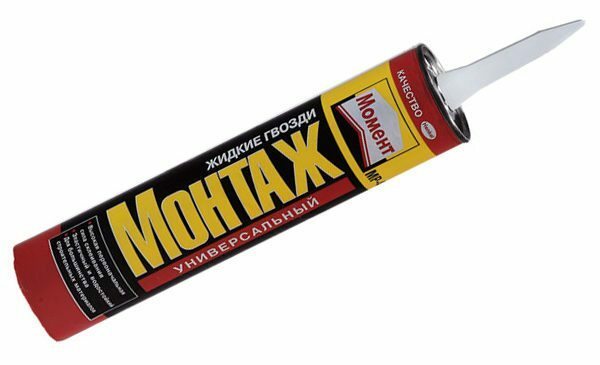White cement - specifications and applications 8
Table of contents
-
1 General information about the material
- 1.1 How to make a solution to
- 1.2 Scope
- 2 To summarize
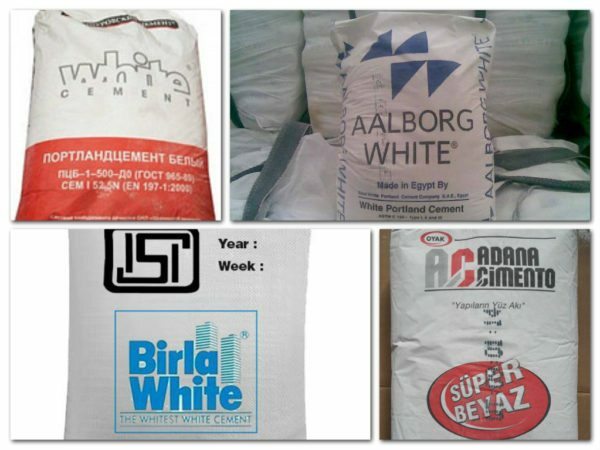
If you want to know what to choose from the variety of white cement, represented in the sale, read on
Along with the gray cement, white on sale occurs, which is not only color, but also the price. I'll tell you what the white cement than it is good and what is used. As a result, you will know - will approach this material for your planned construction works or not.
General information about the material
| illustrations | Distinctive characteristics of the material |
 |
White color. Lighter shade of building materials is achieved thanks to the special composition of raw materials and a special production technology. The main component in the material - malozhelezisty clinker, which in certain proportions and added sequence kaolin, gypsum chopped, crushed limestone, chloric salt. The characteristic white color is provided by a combination of kaolin and chalk. With proper selection of raw materials, in the final material contains a negligible amount of manganese and coloring oxides. |
 |
Strength. White Portland cement is distinguished from gray high compressive strength (up to 59 MPa). Durability is achieved by quenching the clinker mass after firing in an oxygen free environment. |
When clinker burning furnace used in gas or oil burners, the operation of which is formed ash and soot. This is an important condition under which white cement M500 gets its characteristic color.
In accordance with the strength parameters, different brands:
- M400 - average rate of hardening, and high strain at the average shrinkage, low sulphate, high cold resistance and weatherability;
- M500 - hardening the average rate, low shrinkage deformation, sulphate medium, high frost resistance and weatherability;
- M600 - a high rate of hardening, a slight deformation when shrinkage, low sulphate, high cold resistance and weatherability.
According to the degree of whiteness (reflectance) material is subdivided into three classes:
- First grade (Principal) - from 80 to 85%;
- Class II — 75%;
- third-rate — 68%.
Belonging to a particular class and the degree of whiteness is indicated on the packaging. It is from these characteristics depend on the application, the price of material and the appearance of articles manufactured using cement.
Today in DIY stores can buy a Turkish white cement M600 marked with "Super White" and a reflection coefficient - 90%. The price of the bag of 50 kg on average 700-800 rubles (prices are relevant for the spring of 2017) ..
How to make a solution to
By itself, the white cement, diluted with water, is not used in the construction, as laid layer will very soon cracked. So, we need to prepare a solution with a filler.
The problem is that the conventional sand for making white color is not suitable solution. Even seeded sand may contain a small amount of clay impurities which will color the solution. To use at home could need a special filler.
| illustrations | Description filler |
 |
Silica sand is industrially purified. The grains of a uniform shape of the filler with a grain size of 0.1 to 1 mm. Color filling of translucent whitish, as in the photo, to light gray. |
 |
Washed river sand and seeded. The washed sand does not contain inclusions of clay, and therefore the solution will turn slightly. Fraction backfill from 0.5 to 2 mm. |
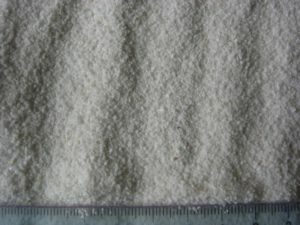 |
marble powder. The price of such a filler above the cost of the sand, but the solution is ready to get really white. Backfill fineness of 0.1 to 1.5 mm. |
Not to be mistaken with a choice of filling, the filling can take several forms in a small amount in the sample. Next you need to cook your own hands a few test solutions by the number of trial fillings. Deciding on the choice of filler is necessary after drying the solution, when it is possible to estimate the degree of whiteness.
| illustrations | Recommendations for the preparation of mortars |
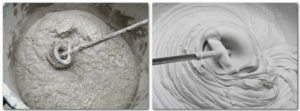 |
proportions. The ratio of components of the solution are the same as when using gray cement: 1: 3 - mortar or white concrete for leveling floors; 1: 5 - leveling plaster. Water-cement ratio should not exceed 0.4, i.e., the solution should be compact but well vymeshennym. |
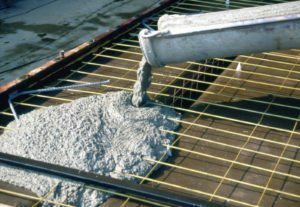 |
Preparation of structural concrete. For the preparation of white concrete used the ratio: 1 part cement, 3 parts sand and coarse aggregate 2-3 parts. If the concrete is pouring the floor, as a filler used crushed marble with a grain size of 10-15 mm. After the concrete attains branded strength, the surface is polished to a great smoothness. Concrete is prepared only in clean stirrers, the walls of which no remains of the previous solutions or rust. |
Scope
| illustrations | The use of white cement |
 |
1. Production of grout seam. Due to the high strength, white cement is used for making suture grout. As filler, grout used in the composition of crushed chalk or gypsum. On the type of filler depends on the speed of setting the composition. |
 |
2. Production of mixtures for masonry mortars. To finishing decorative masonry look more attractive solution is used as a composition prepared on the basis of white cement. For consistency, the same mortar as conventional masonry mortars, the only difference in color. |
 |
3. Precast concrete products. White cement is used for stairs, railings, decorative elements, tiles and various architectural forms. |
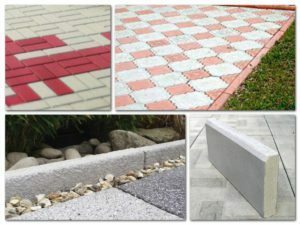 |
4. Production of paving and accompanying elements. From tsementopeschanogo solution made paving tiles, curbs, concrete ring to abut against trees etc. Such products are either completely white or painted with special dyes. |
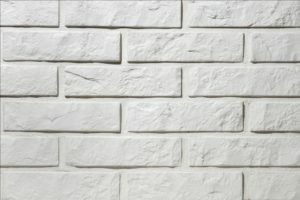 |
5. Finishing brick. Finishing brick - a kind of tile, which is used for wall cladding. Tiles manufactured from a solution prepared of white cement without the addition of colorants or pigment powders. |
 |
6. Preparation of solutions for self-leveling floor. White cement dry mixture made with the addition of polymeric fillers. After mixing with water, is added to a mixture of the marble chips or other decorative fillers. The solution was spread evenly over the floor surface, and after drying, grinding and polishing. |
 |
7. Preparation of solutions for exterior finish. White cement is used for production of dry plaster mixtures. The advantage of such mixtures to gypsum-based interior design - higher strength and weatherability. |
 |
8. Production of decorative sculptures. White cement manufactured sculpture alloy for use in the open air. These sculptures, unlike plaster analogues are at least ten years. |
To summarize
Now that you know what the white cement and how to use it in construction. Further details can be found by watching the video in this article. And the questions you can ask in the comments.

